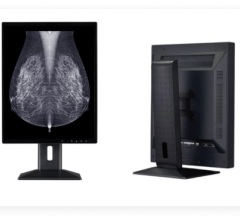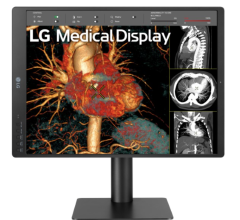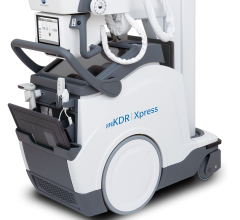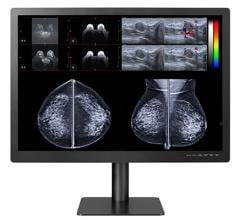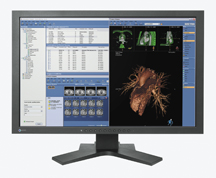
EIZO shows its colors with the Flex MX240W.
Ever wonder where engineers get their ideas for designing a new product? In many cases, it is nature leading the way with form-fit-function. For example, a color display has three sub pixels of red, green and blue (RGB) that when combined in a ratio of 20, 70 and 10 are seen as white or some shade of gray. The human eye has “cone” receptors predominantly in the fovea and they can be divided into three groups based on wavelength sensitivity - red, green and blue - color and monochrome LCD displays use the same CCF lamps as the luminance source with the liquid crystal material acting as the light value. CCF lamps produce three distinctive wavelengths, again red, green and blue. The only difference between a monochrome and color display is how the three hues exit, either combined or separated. They are still integrated at the fovea for a seamless image.
What makes today’s color LCDs viable for diagnostic reads of CR/DR images is a combination of higher peak luminance and small pixels (pixel pitch) that are below the eye’s ability to detect the mechanical row/column structure of the LCD. The new 3 Megapixel (MP) color cores are very difficult to distinguish from a monochrome when setup at the same peak luminance and luminance ratio.
The history of color displays restricted their use to low-end images associated with ultrasound, nuclear imaging and similar modalities. High spatial content such as CR/DR required a monochrome solution to provide the luminance with small pixels to render fine detail. Color going back to CRTs had large pixels with limited pixel density no greater than 1,600 by 1,200 and half the luminance of a monochrome. Color CRTs also had poor contrast due to pixel overlap, in other words, a single pixel command would excite three or more surrounding pixels. Color LCD displays not only removed the pixel density limits with formats of 3MP and up but equaled their monochrome counterparts for contrast modulation (the ability to put an off pixel between two 100 percent on pixels and see the gap). In early 2008, a number of vendors introduced improved color displays at 3MP that could sustain 400-450cd/m2, the optimum luminance range for a reading room and meet AAPM suggested minimums. First generation 3MP color LCDs topped out at 350cd/m2 before calibration, which left minimal long term compensation capacity to meet AAPM.
Another argument against color is that three sub-pixels of RGB are utilized to produce a net hue, which for a Kodak moment is fine, but to produce a grayscale image the balance of the RGB is 20 percent, 70 percent and 10 percent. As such, the green pixel provides the majority of the luminance, while the red and blue control the grayscale appearance. For those who are early implementers of PACS, the best color CRTs were 21-inch at 1,600 by 1,200 pixels and by virtue of the technology, the individual sub-pixels (RGB) were visible on close inspection. Active Matrix – LCDs present a much sharper definition of an individual pixel with more than twice the contrast modulation of the CRT.
Viewing distance is a factor in workstation setup that makes color and monochrome 3MP displays appear equal. A radiologist’s optimum reading distance is 0.66 mm, at which distance the eye is capable of detecting 2.5 cycles/mm of a standard target or approximately a 0.20 mm target. Put another way at the same distance, two on pixels need to be separated by 0.18 mm (off pixel) for the eye to see them as distinct. The color content of the menu bar should be your only clue that it is a color display.
Color LCDs with their color filters are less efficient than their monochrome counterparts without filters and this puts them at a disadvantage for peak luminance. But filters also reduce the black level by blocking light leakage indicative of all LCDs. In low ambient reading conditions, the color LCD can provide better contrast at the lowest grayscale levels wherein a monochrome LCD would have measurable light leakage. As noted previously, if a color and monochrome LCD are setup the same, they will appear equal to the eye. Being the same means setting the black level to no less than 1.5 times the ambient (4 times is ideal) to prevent data loss at the darkest regions and matching the luminance ratio (aka, contrast ratio for old school).
For a radiology workstation in today’s world of increasing color content and enhancement, there is no reason left to not have a pair of color 3MPs for all modalities - except mammography - including CR/DR.
Ken Compton, Medical QC Images, LLC., Weatherford, TX, 76087; Phone: (817) 701-6772.

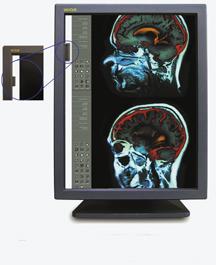
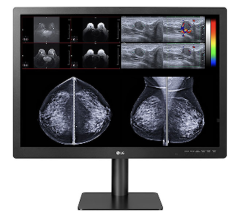
 March 12, 2024
March 12, 2024 
